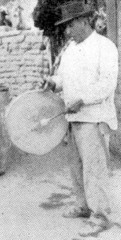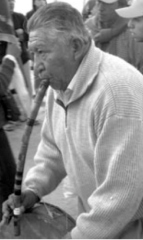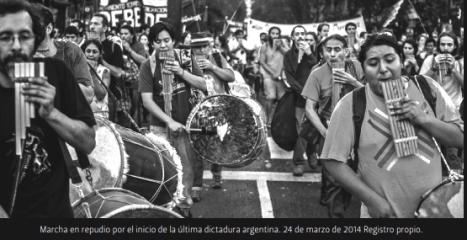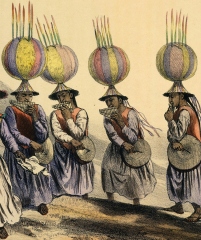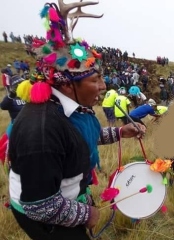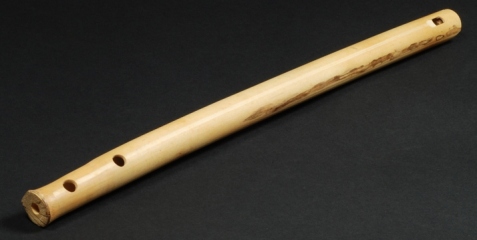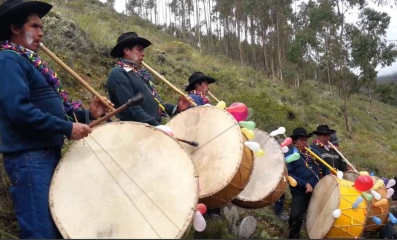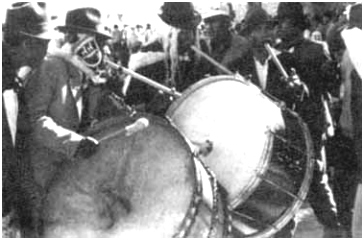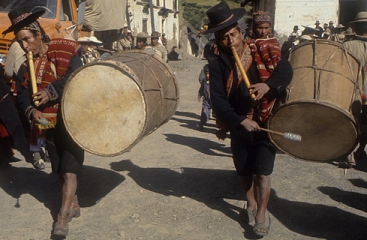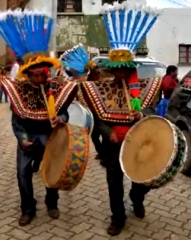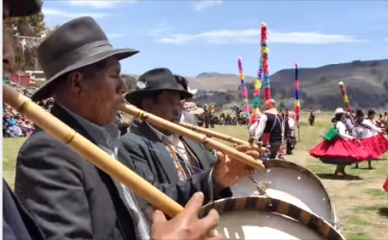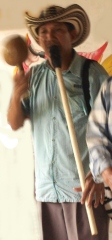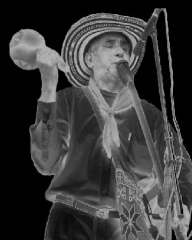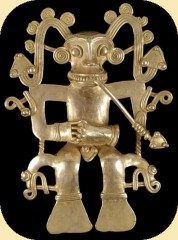South and Central America
archeology to today
_
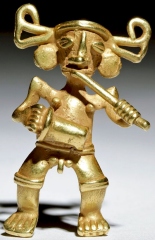 gold figure gold figuredetails not known |
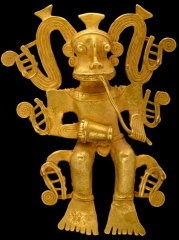 |
gold figure details not known |
|||||||
1514 “Music was performed for the Spanish governors in the privacy of their own households and most maintained ‘Music and musicians in Renaissance cities and towns’, 2001 |
|||||||||
| "“our cavalcade entered the town ... and every house resounded with the noise of trumpets, tabors, and pipes. ..." Before feasts they " select a number of Indians who are to be the dancers ... The music is a pipe and tabor, and the most extraordinary of their motions some awkward capers; in short, the whole is little to the taste of an European. ... then one of them plays on a pipe and tabor, whilst others dance, as they call it, though it is not more than moving confusedly
|
|||||||||
Argentina |
|||||||||
|
|
|||||||||
|
South America with dancers video Txistu from Banfield |
||||||||
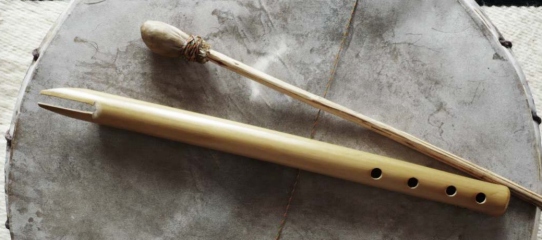 kamacheña, end-blown flute kamacheña, end-blown flute |
|||||||||
The geographical area where the kamacheña (flute) is built and used comprises northwestern Argentina and southern Bolivia When performed together with the kamacheña, the caja (drum) is usually fastened by a loop of leather to the right wrist of the male musician, who holds the waqtana or guastána, the stick or mace, in the same hand. Andean traditional gender taboos do not allow women to play aerophones (wind instruments). The Andean traditional calendar lays down that each musical instrument can only be performed during a specific time of the year and for specific purposes (usually related to agriculture and other traditional practices). The kamacheña is played during the awti pacha or "dry season" (comprising from Carnival to All Saints' Day). Hence, its sound will be heard at winter festivals, e.g. during the feast of San Roque (mid-August) and, of course, All Saints celebrations (early November) and Carnival (February and March). |
|||||||||
Bolivia |
|||||||||
 18th century playing for morenada dancers 18th century playing for morenada dancersduring a Catholic church festival |
|
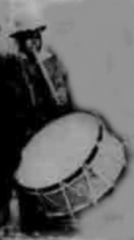 1948 photograph page 627 1948 photograph page 627 |
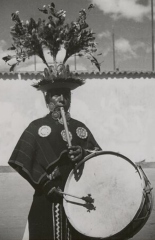 1954-1970 1954-1970 playing for the Wititi dance, Umala |
||||||
Pincullo is also called pincollo, pinvollo, pinquillo, pincuillo opingollos and in Quichua aymará pinkiyllu, pinkillo In today’s Bolivian and Peruvian Andes, pinkullu or pinkillu duct flute performance is exclusively male, strongly associated with courtship and usually restricted to the rainy growing season between All Saints (November) and Carnival (February or March). The instrument’s sound is widely claimed to attract rain and to cause the crops to grow. The name applies equally to the three-hole pipe, played with a drum by a single player, or to five-, six- or seven-hole duct flutes which are typically played in consort. |
|
||||||||
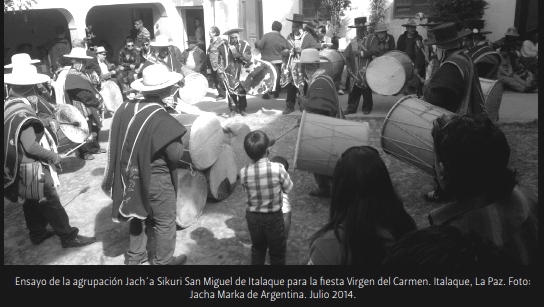 2014 2014 |
|||||||||
|
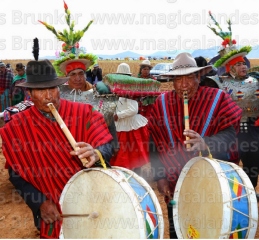 |
||||||||
|
|||||||||
|
|||||||||
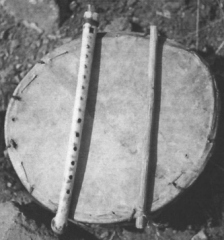 |
Kunfur pinquillo (condor flute) or quri pinkilly (golden flute) from Ayllu Macha, northern Bolivia. photog Henry Stobart |
|
|||||||
 2006 horn and tabor in a parade page 48 2006 horn and tabor in a parade page 48 |
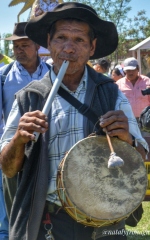 Quenillero and drum Quenillero and drum |
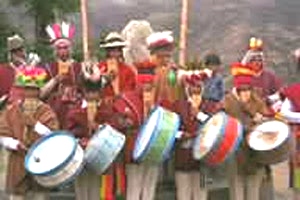 1992 Qhochipata Indians, panpipes and drum 1992 Qhochipata Indians, panpipes and drum |
|||||||
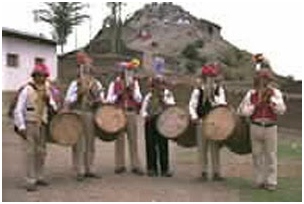 1992 Tambocusi Indians 1992 Tambocusi Indians |
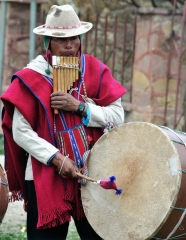 2009 Bolivia 2009 Bolivia |
||||||||
Brazil |
|||||||||
1848 from a voyage on the river Amazon by H W Bates: “In the evening we had more visitors. The |
|||||||||
Chile |
|||||||||
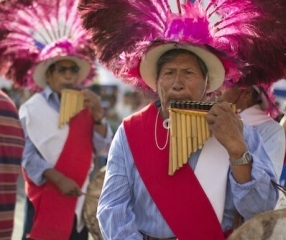 procession procession |
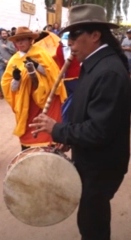 Antofagasta, playing for dancers Antofagasta, playing for dancers |
||||||||
Colombia
|
|||||||||
Costa Rica |
|||||||||
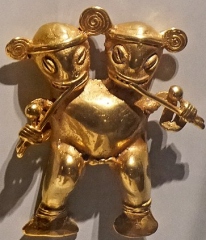 700 - 1550 pipes and rattles 700 - 1550 pipes and rattles |
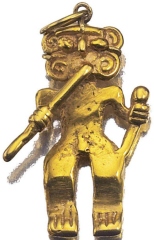 800-1200 gold pendant 800-1200 gold pendant |
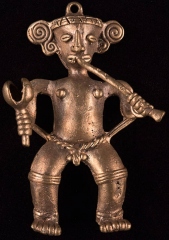 750-1550 Chiriqui pendant 750-1550 Chiriqui pendant |
|||||||
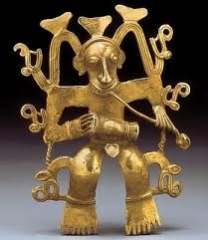 Panama/Costa Rica figure Panama/Costa Rica figure pipe or snake? |
|||||||||
top of page
